Dry Eye Center
The First and Only Dry Eye Center in North Central Florida
Dry Eye is one of the most under-diagnosed ocular diseases, and yet it is the most common reason why patients go see their eye care doctor. Dry eye disease is a progressive condition where the eyes cannot produce sufficient lubrication to maintain the normal health of the ocular surface.
This can be due to inadequate production of tear fluid (aqueous), oil (lipid), or mucus (mucus) or if something is interfering with the eye’s mechanical ability to blink or close.
Women are more frequently affected than men, and it is often caused by hormonal changes due to aging and menopause or medical conditions.
Your eyes need a constant layer of tears – called the “tear film”- to maintain and protect the ocular surface. With dry eye, underlying changes to the health of the tear-producing glands can result in a change in the quantity and quality of the tears you make. This results in a tear film that can no longer provide enough nourishment or protection to the surface of your eye. This can lead to damage of your eye’s surface, which, in turn, can lead to more serious effects of dry eye.
Long Term Effects of Dry Eye
When the production of natural, healthy tears is reduced, dry eye can cause serious irritation to the front of the eye, particularly the cornea. A natural, healthy tear film not only lubricates the surface of the eye, but also works to fight infection and provides important nourishment that is vital for clear vision.
Increased risk of infection and serious visual impairment may result in cases where a severe dry eye condition has gone untreated over time.
Reduced tear production over a long period of time increases the risk of permanent damage to the front of the eye (ocular surface disease).
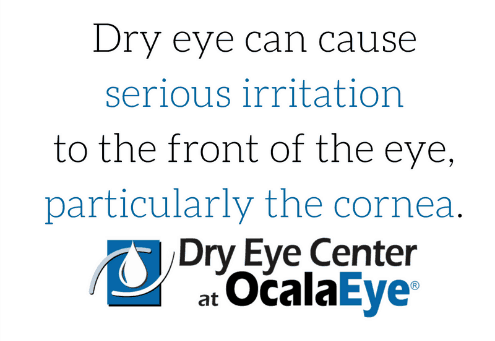
Dry Eye Evaluations
Determining the cause of your dry eye condition is important in deciding which treatment options are best for you. Your evaluation consists of a thorough examination and a review of your medical and personal history.
This is followed by a panel of diagnostic modalities unique in the area to Ocala Eye’s Dry Eye Center. Based on your exam and your test results, a personalized regimen will be prescribed for you.
During the examination, the doctor examines the entire nasolacrimal system including the ocular surface, the lid margins, the nasolacrimal ducts (‘tear’ ducts), the meibomian glands, and the blink mechanism. Careful evaluation of the meibomian glands for their function and quality of secretions offers clues as to the potential causative factor.
Besides lid (Blepharitis) and meibomian gland disease (Meibomitis), there are many other factors related to dry eye disease including:
- Auto-immune diseases (such as arthritis, fibromyalgia, etc.)
- Side effects from medications
- Allergies
- Aging
- Hormonal changes (particularly in women)
- Environment (heat, humidity, wind, etc.)
- Skin type
- Genetics
- Rosacea
- Diet
- Mechanical factors (such as previous eyelid surgery)
Additional Dry Eye Tests
Human tears normally contain a certain amount of salt, known as osmolarity. Too high a level of osmolarity causes many of the symptoms of Dry Eye such as burning and stinging. More importantly, high osmolarity can lead to damage of the surface of the eye over time (ocular surface disease). The tear film osmolarity can now be measured in seconds using the TearLab Osmolarity Test, which painlessly takes a tiny sample of your tears for analysis. Osmolarity testing is covered by most insurance, including Medicare.
The OCULUS Keratograph® offers advanced views of the tear film by looking at the different layers to see where the deficiencies are as well as the lash line and gland openings.
Dry Eye Treatment Options
Our board certified and fellowship trained ophthalmologists will work with you to determine the best treatment method for your particular case of dry eye. To learn more about some of the more common treatment methods, click on one of the tabs below.
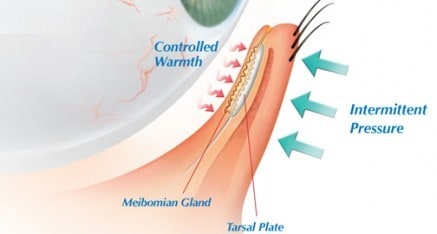 The procedure, performed in a doctor’s office, is virtually painless and some patients consider it somewhat like a spa experience. In some cases, treatment can be performed the same day as your evaluation and total treatment time is approximately 12 minutes for both eyes. There are no restrictions or limitations after the procedure.
The procedure, performed in a doctor’s office, is virtually painless and some patients consider it somewhat like a spa experience. In some cases, treatment can be performed the same day as your evaluation and total treatment time is approximately 12 minutes for both eyes. There are no restrictions or limitations after the procedure.
In a clinical study, 79% of patients reported improvement of their overall dry eye symptoms within four weeks, ranging from 10% to 100% improvement. The duration of effect has been more than a year or two, but in our experience this can be prolonged if patients are a daily dry eye regimen.
For more information visit www.LipiFlow.com.
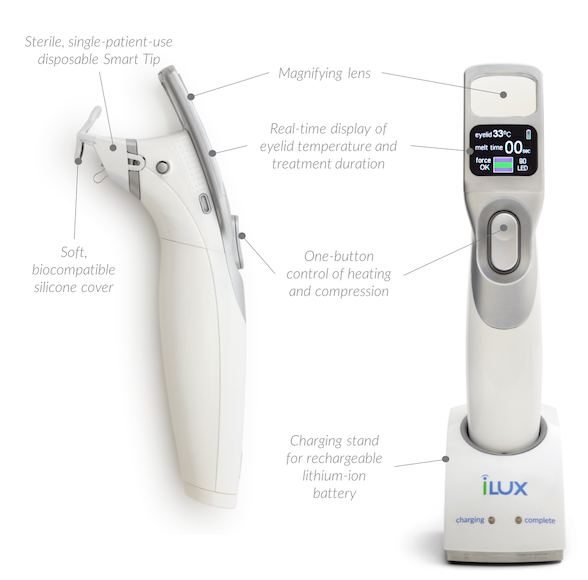 iLUX is a handheld device that applies heat and compression via a sterile, single-use disposable Smart Tip to treat meibomian gland dysfunction. The Smart Tip allows for specialized treatment as different areas of the eyelid may require more or less treatment to ensure the blockages have been sufficiently cleared. Once treatment begins, it takes approximately 8-12 minutes for both eyes.
iLUX is a handheld device that applies heat and compression via a sterile, single-use disposable Smart Tip to treat meibomian gland dysfunction. The Smart Tip allows for specialized treatment as different areas of the eyelid may require more or less treatment to ensure the blockages have been sufficiently cleared. Once treatment begins, it takes approximately 8-12 minutes for both eyes.
The iLUX device was shown to significantly reduce dry eye symptoms such as gritty eyes and irritation.
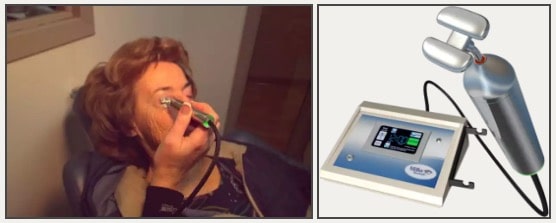
The heat is absorbed deep into the tissue and it breaks down the hardened oils in the meibomian glands. In many cases the doctor may need to express the glands after the procedure to remove the melted contents With a prescribed maintenance regimen, the meibomian glands will eventually begin secreting thinner and clearer oils which will allow for a healthier tear film.
MiBo Thermoflo can also be used for treatment of styes, chalazions or areas where drainage needs to be encouraged.
One of the traditional treatments for blepharitis patients is to scrub their lid margins to remove bacteria. Lid scrubs helps control or reduce symptoms of itching, crusting and foreign body sensation. For some patients, this is sometimes hard to do at home.
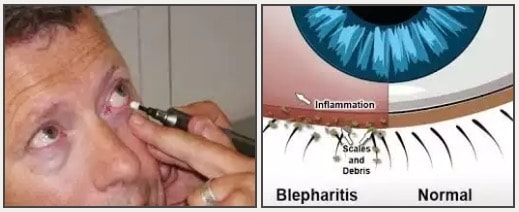
Fortunately, there is now an in-office treatment for blepharitis: Bleph-Ex uses a micro-sponge is used to exfoliate and clean the eyelids and lashes, removing the bacteria and debris from the lid margins. The treatment takes only a few minutes and both eyes can be done on the same day.
By eliminating the scurf and bacterial debris, the openings of the meibomian glands are cleared, allowing them to secrete oil unobstructed. Symptoms of itching and crusting are reduced or eliminated.
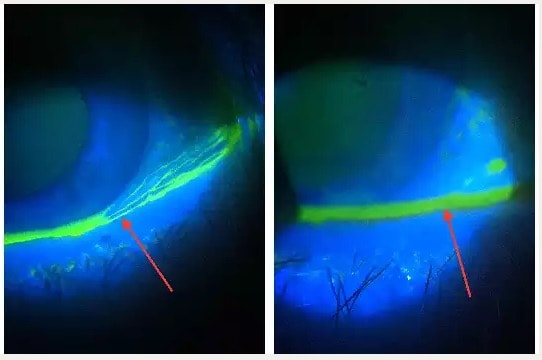
Before and after pictures for the CCH treatment.
Conjunctival chalasis or CCH is an often under-diagnosed condition common in patients who suffer from dry eye symptoms. CCH is the abnormal loosening of the conjunctiva, the thin membrane which covers the surface of the eye and is responsible for producing a major part of the eye’s lubrication. CCH is caused by chronic dry eye and inflammation and results in folds of tissue which can catch on the lids during blinking, producing the common complaints of ‘foreign body sensation’ or a feeling like there is something in the eye. In addition, this loose tissue obliterates the pocket, known as the inferior fornix, which is normally found between the eye and the lower lid and that acts as a reservoir of tear fluid during blinking. Without this reservoir, the eye quickly runs out of lubricating fluid. This, coupled with the irritation due to the loose tissue, causes the eye to water excessively. This often explains the paradoxical symptom of tearing that is common in dry eye disease.
Initially conservative measures such as improving the tear production and oil production can minimize the symptoms due to CCH. But in most cases the only real treatment is removal of the loose tissue and replacement with a thin membrane of amniotic membrane, obtained from umbilical cords. During the 15-minute minor surgical procedure, this membrane is ‘glued’ onto the surface of the eye without any stitches. Many patients will experience relief of their symptoms within just a few days.
Other Adjunctive Therapies
In more severe cases of dry eye, particularly those associated with collagen-vascular disease such as rheumatoid arthritis, more aggressive treatment may be indicated:
- Topical or systemic immunosuppressive therapy
- Bandage contact lenses or scleral shell lenses
- Amniotic membrane or corneoscleral patch grafts
- Autologous serum eye drops
- Punctal cauterization
- Lateral tarsorrhaphy (surgical partial closure of the eyelids)
- Glue patch for perforations
- Corneal transplant
Complications of Severe Untreated Dry Eye Disease
In a small minority of cases, severe dry eye disease, if not appropriately managed, can lead to significant consequences:
- Chronic Surface Disease which can affect the vision
- Limbal stem cell deficiency
- Corneal scarring
- Corneal neovascularization
- Corneal melts which can lead to perforation and loss of the eye
Treatment with the Dry Eye Center at Ocala Eye
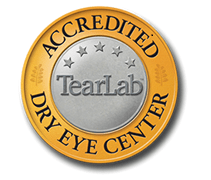 In keeping with our philosophy of offering comprehensive eyecare to patients in north central Florida, Ocala Eye is proud to be the area’s first and only practice with a dedicated Dry Eye Center.
In keeping with our philosophy of offering comprehensive eyecare to patients in north central Florida, Ocala Eye is proud to be the area’s first and only practice with a dedicated Dry Eye Center.
Located at our Heath Brook and Villages office, our Center offers a wide-range of diagnostic and therapeutic resources together with our 20+ years of unmatched experience in the field.
Consult an Ophthalmologist
Ocala Eye’s fellowship-trained ophthalmologists and medical staff are dedicated to helping your vision last a lifetime, which is why we offer comprehensive eye care for adults of all ages. From annual eye exams to advanced procedures like LASIK and cataract surgery, we can help you see your best at any phase of your life.

